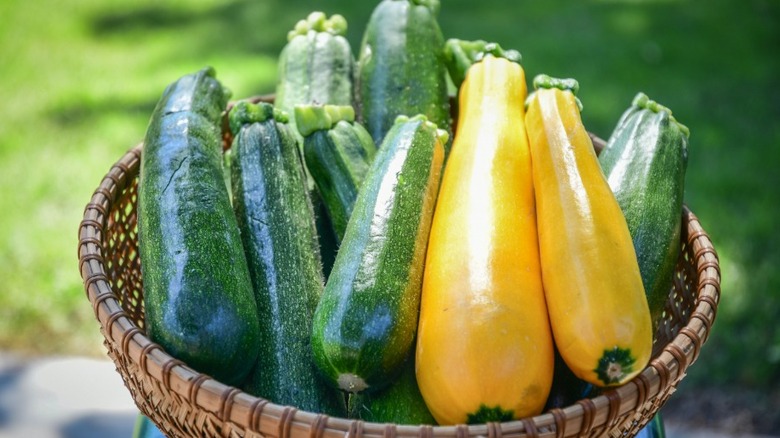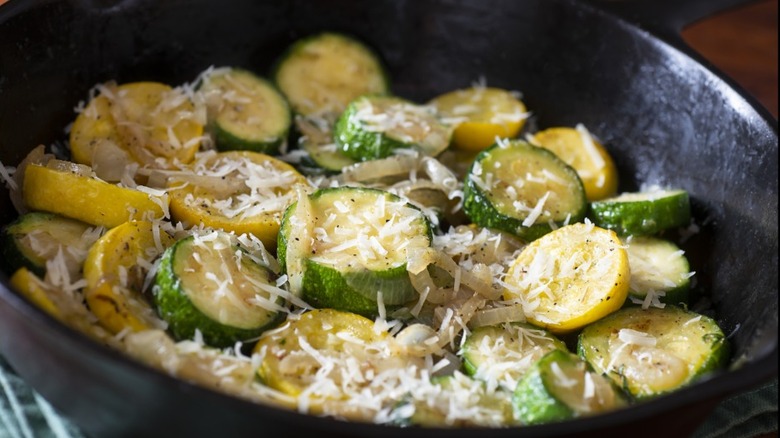Summer Squash Vs. Zucchini: Is There Any Difference?
Squash are flowering plants belonging to the gourd family and biologically considered fruits despite their traditional culinary preparation as vegetables. Surprisingly, there are at least 50 different types of squash, which are categorized in groceries as either winter or summer squash. Among the summer squash varieties, zucchini and yellow squash are the most widely consumed, due to their year-round availability in grocery stores across North America.
It's worth noting that yellow squash is often mislabeled as "summer squash" in grocery stores. Summer squash is the category and a yellow squash is a variety within that category. At the grocery store, if you see a long, yellow item with small bumps on its skin and a bulbous bottom with a slightly curved or straight neck near the other vegetables within the produce section, that's a yellow squash.
One might assume that since both types of squash are widely consumed and often combined in dishes, there wouldn't be very many significant differences between them. While they're both similar in terms of deliciousness and versatility, there are indeed notable differences. From their visual characteristics to their flavors, textures, and cooking requirements, as well as the types of recipes each is more suitable for, there are many different aspects to explore between these two summer squashes and ways to use them.
Slightly different but better together (most of the time)
If you're not familiar with the appearance of a zucchini, it looks quite similar to a yellow squash in shape. Both are long, but unlike a yellow squash's bulbous end and sometimes curved neck, a zucchini is simply straight from top to bottom. Zucchini are usually green, but yellow zucchini also exist. However, yellow squash cannot be fully grown as green squash.
Both types of squash have a mildly sweet flavor, whether eaten raw or cooked. When zucchini is cooked, however, it has a noticeably buttery texture, which is great when making zucchini pesto. Neither squash needs to be peeled, but yellow squash has slightly thicker skin, giving it a waxier taste. The size of the seeds inside each squash depends on its size. Zucchini usually have smaller and thinner seeds than yellow squash. The seeds in either squash are quite forgiving to eat though because they're soft.
Zucchini and yellow squash can be cooked using the same methods, temperatures, and durations as long as they're cut into the same sizes. Since zucchini can grow to be life-sized during the summer months, this means it won't cook at the same rate as a much smaller yellow squash if it's kept in larger-cut shapes. Most recipes and cooking resources claim that zucchini and yellow squash are interchangeable, like in this zucchini casserole with cheddar, but with yellow squash instead. However, it's much harder to find a chocolate yellow squash bread recipe than it is to find a chocolate zucchini bread recipe and that's because zucchini is the preferred type for baking. This is attributed to its buttery texture and flavor, which harmonizes better in baked goods.
While the differences between zucchini and yellow squash aren't terribly significant, you really can't go wrong when cooking with either one, or better yet, both. Whether you choose one over the other depends on personal preference, desired color contrast in a dish, or specific culinary applications.

